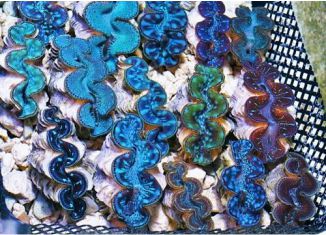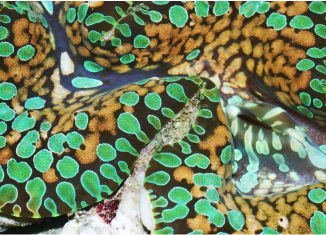Your Cart is Empty
clam quick tips
Care Level
For cultured clams the care level is Easy to Moderate, for wild collected the care level is Difficult. Clams love intense lighting, they feed off the products of photosynthesis and this demands intense lighting. They also tend to do better in systems that are not sterile or too clean. Since they also utilize dissolved organics in the water they do best in tanks with a well fed fish population.
Aggressiveness
Clams are not aggressive, but may be stung by aggressive corals and anemones and may be attacked by many types of carnivorous fish including angelfish and butterflyfish. It has been reported that small fish such as clownfish have been inadvertently killed by clams as they naturally close when an intruder approaches or casts a shadow over them although this is rare.
Lighting Requirements
Clams can be kept under many types of lighting including full spectrum LED. Metal halide lighting is the best for clams, but we have kept cultured clams under only LED for several years and they have thrived and grown well with that lighting. You can use less intense lighting if your tank is not so sterile because your clam can then feed off more dissolved organics and not have to rely on lighting as much. Clams can be kept under other types of lighting such as T-5 fluorescent but these are not optimum and would require many bulbs to provide sufficient intensity.
Water Flow
Clams are not too dependent upon specific levels of water flow. In the wild they are found in areas with intense flow, but in your tank they do not require as much flow.
Tank Placement
Clams may be placed on the bottom of your tank on rock rubble so the foot may attach. It is not recommended to place clams on rockwork because it is very detrimental for a clam to fall off and lay upside down for any period.
Water Quality
Maintain proper Calcium, Alkalinity, and Magnesium levels for shell growth. They do better in systems that are not too pristine so some level of Phosphate and Nitrate is not at all detrimental to them. Full strength Natural saltwater parameters are best including salinity.

Base and Substrate
Clams need a secure firm base to attach their foot. Without a firm substrate such as rock or rock rubble your clam can not attach, a natural and relatively rapid process, and therefore is vulnerable to predators. We keep clams in our system with gravel or rubble so that we can easily handle them and ship them without damaging the foot. Most clams, especially cultured, attach to this rubble very quickly. In your tank you should have some rock or rock rubble under your clams so they can naturally attach. They should never be glued in place or otherwise artificially attached and must have enough room to naturally open and close.

Coloration
Coloration in clams can appear to be different when they are viewed at different angles. This is strictly an optical effect and not an actual change in the clam's color. We view them and photograph them from the top down in our systems. When put into a tank and viewed from the front they will appear to be different in color than when you view them from the top down into your tank.
Special Notes
Take care when unpacking or handling your clam that you do not expose it to air because air bubbles can become lodged inside the clam. Internal air bubbles can cause problems for the clam if it can't successfully expel the air by itself. To alleviate this problem "burp" the clam by rocking it back and forth underwater to dislodge any trapped bubbles.












